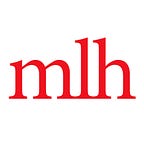The Unveiling of Curricle
About three years ago, metaLAB at Harvard took up the challenge to develop a digital tool that would revolutionize how students, faculty, and administrators engage with the Harvard curriculum. And on Thursday August 2, 2018, the LAB presented Curricle to a small audience of deans, faculty, and members of Harvard Initiative for Teaching and Learning (HILT). This presentation was the soft launch of Curricle, a platform that visualizes the course catalog and the history of Harvard’s curriculum through the use of algorithms and machine learning. Curricle is still a work in progress, but a fully working beta version will be live later in August, ready to be tested during the fall semester.
Jeffrey Schnapp, Faculty Director of metaLAB, began the presentation by talking about Curricle’s history and ambitions. When you look at the history of the course catalog, he said, from pamphlets to the printed book that dominated for 80 years to the online version currently in use, the basic way we describe courses hasn’t really changed. A course has always been treated as “an atom placed in a list.” But “a curriculum is a living, pulsing thing made out of relationships,” Schnapp said, and this is what Curricle aims to capture.
One way the program does this is by visualizing curriculum “over the sweep of time,” as Associate Director Matthew Battles said, before running a demo of the website. Designed by Data Visualization Designer Kim Albrecht, Curricle has a sleek, minimalist look. Battles noted that the design “activates course selection and discovery thinking in terms of verbs” — EXPLORE, SEARCH, and PLAN are options on the left hand sidebar. Clicking one of these modes of operation allows a user to explore courses through networks (not atoms), bringing up “Discovery Visualizations” in charts, maps, and even course clusters.
One particularly impressive visualization is a “Course Universe,” which lays out all the classes offered by departments and schools as clusters of galaxies; a user can drill-down into each galaxy to click on individual stars/courses. (This function was inspired by Albrecht’s art piece “Cosmos,” an immersive visualization of the cosmic web, and shows metaLAB’s signature intersection of art, technology, and science.) Using a Machine Learning approach, Battles explained, Curricle is able to identify similarities in data sets and then visualize that data, with differently constructed algorithms seeing the curriculum in different ways. It’s not that the machine tells you what classes you should be taking, Battles clarified, but rather enables a playful, more intuitive method of course discovery.
Creative Technologist Jessica Yurkofsky then showed how Curricle visualizes the history of Harvard by mapping the development of schools and departments within the university, and also what courses individual instructors have taught over time. She said that Curricle’s functions explore “knowledge networks,” and demonstrated with a visualization of intersections between keywords, to see where they overlap in the curriculum. She typed in “truth” and “lies” and a web of color-coded departments and schools emerged in which courses relating between those words could be found. All of the functions of Curricle are “new ways of slicing the catalog,” Yurkofsky said, “providing a new lens into the curriculum.”
Yurkofsky emphasized the tool’s aim for workflow seamlessness. For instance, a dual-display sidebar allows a user to add courses to their tray while they search. There are also functions that allows a user to visualize their potential schedules through a week calendar (rather than exporting it Google calendar, as many students currently do), and to create future schedules for the entire college career, which isn’t possible on my.harvard. With Curricle’s annotation tools and social features, students can also keep notes, highlight links, and share questions and ideas.
Another thing data visualization does is tell stories, and a series of micro-narratives are being developed to tell the stories behind the curriculum of Harvard and its institutional history. As an example of a micro-narrative, SHARP Fellow and Harvard senior Snow Dong presented a media-rich aspect of her summer work researching the history of Harvard’s East Asian Studies Department. This history, Dong says, is actually the history of US-China relations, since many major events in that relationship involved Harvard faculty.
The history aspect of Curricle, Schnapp noted, is an “inducement to curiosity.” That is, the data visualizations allows students to broaden their course search within an immensely larger context, thereby “embodying some of the university’s virtues in a tool,” as Battles added. When metaLAB’s other SHARP Fellow Sinead Danagher presented her work on Curricle’s advance tools for planning and advising, she mentioned a “course playlist” function, which would have categories like “most popular” or “what students in your cohort are taking,” and the audience turned into nodding heads.
In general, the audience was very engaged throughout the presentation (hardly anyone even glanced at their phone), and once it opened up to questions, Rakesh Khurana, Dean of Harvard College, said that even though Curricle was foremost for students, it would “incredibly improve our pedagogical experience, which is really our mission.” Khurana’s colleague Dustin Tingley, a professor of Government and Faculty Director for the Vice Provost Advances in Learning Research Group, commented how the Curricle project would push my.harvard, administrators, and department chairs to do things better by providing them with the tools to do so — by giving them “a product out of the institutional improvements that are happening.” Then Robin Kelsey, Dean of Arts and Humanities in the Faculty of Arts and Sciences, echoed the positivity by saying Curricle was “fantastic” and “would move the ball forward in a lot of vital ways.”
That is to say, the presentation went very well. At the end of it, Schnapp asked, “How do we become a data-smart institution?” It seems he and the metaLAB team had just provided an answer.
—Randy Rosenthal
